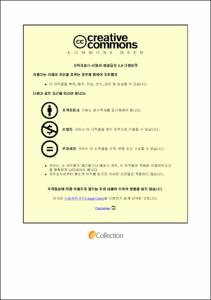기혼 간호사의 근무형태에 따른 일-가정 양립갈등과 이직의도 관련요인 비교
- Issued Date
- 2020-02
- Abstract
- The purpose of this study was to identify factors affecting turnover intentions based on the working patterns for married nurses. The sample consisted of 237 married nurses from hospitals with 100 beds or more. These data were collected through an online survey conducted from August 12th to September 25th, 2019. The research tool consisted of a questionnaire using work-family conflict and turnover intention measuring tools. The data were analyzed by frequency, percentage, mean, standard deviation, chi-square test, t-test, ANOVA, Scheffé test, Pearson's correlation coefficient, and Stepwise multiple regression analysis with the IBM SPSS 25.0 statistical program. The results of this study were: The degree of turnover intention for married nurses based on their work patterns was higher for non-shift pattern married nurses (3.36 out of 5 points scale) compared to shift pattern married nurses (3.32 out of 5 points scale), although this result was not statistically significant. There were significant differences between shift pattern and non-shift pattern married nurses in their reasons for turnover intention. For shift pattern married nurses, the primary reason was due to irregular daily life because of shift work (32.2%) and for non-shift pattern married nurses, it was for raising children (36.1%). There were significant differences between groups in their turnover intention according to general characteristics and work-related characteristics. For the shift pattern married nurses their major intentions were life-cycle within childfree status (F=3.73, p=.027), the number of children (F=3.74, p=.027), family affinity utilization (t=2.41, p=.017) and job satisfaction (F=26.01, p<.001). For the non-shift pattern married nurses their intentions were spouse's participation in family chores and childcare satisfaction (t=7.34, p=.001), hospital size of more than 800 beds (F=4.88, p=.009) and job satisfaction (F=16.36, p<.001). There was a statistically significant positive correlation between work-family conflict and turnover intention in the subjects. The work-family conflict was positively correlated (r=.46, p<.001) with the turnover intention for the shift pattern of married nurses. While for the non-shift pattern married nurses, the work-family conflict (r=.43, p<.001) and the family-work conflict (r=.30, p=.001) were both a significant positive correlation. As a result of performing Stepwise multiple regression analysis of turnover intention, we found that the influencing factors for shift pattern married nurses were job satisfaction, work-family conflict, and life-cycle within childfree status, explaining 37% of the variance. And for non-shift pattern married nurses, we found that the influencing factors were work-family conflict, job satisfaction, hospital size of more than 800 beds, and spouse's participation in family chores and childcare satisfaction, explaining 33% of the variance. These results lead us to propose differentiated job prevention measures in consideration of the characteristics of married nurses based on their work patterns. These findings can be used to structure the organizational support network required to create a working environment that ensures the retention in the workplace of competent and skilled married nurses maintaining stability and facilitating career development.
기혼 간호사의 근무형태에 따른 일-가정 양립갈등과 이직의도 관련요인 비교 김 정 남 계명대학교 대학원 간 호 학 과 (지도교수 이 은 숙) (초록) 본 연구는 기혼 간호사를 대상으로 근무형태에 따른 이직의도의 차이를 비교하고 이직의도에 영향을 미치는 관련요인을 파악하기 위한 서술적 조사연구이다. 연구대상은 100병상 이상의 의료기관에 근무하는 기혼 간호사 237명을 대상으로 하였다. 자료수집은 2019년 8월 12일부터 2019년 9월 25일까지 온라인사이트를 통해 수집하였으며 연구도구는 일-가정 양립갈등과 이직의도 측정도구를 이용한 설문지문항으로 구성하였다. 자료분석은 IBM SPSS 25.0 통계프로그램을 이용하여 빈도, 백분율, 평균, 표준편차, 교차분석, t-test, ANOVA, Scheffé test, Pearson's correlation coefficient 및 Stepwise multiple regression analysis로 분석하였다. 연구결과를 요약하면 다음과 같다. 첫째, 기혼 간호사의 근무형태에 따른 이직의도 정도는 교대근무 기혼 간호사는 평균 3.32점, 상근직 근무 기혼 간호사는 평균 3.36점으로 통계적으로는 유의하지 않으나 상근직 근무 기혼 간호사의 이직의도가 더 높게 나타났다. 이직의도의 이유를 살펴보면, 교대근무 기혼 간호사는 교대근무형태로 인한 불규칙한 일상이 37명(32.2%), 상근직 근무 기혼 간호사는 자녀 양육을 위해서 44명(36.1%)으로 가장 많아 두 집단 간의 유의한 차이를 보였다. 둘째, 기혼 간호사의 일반적 특성 및 근무관련 특성에 따른 이직의도는 교대근무 기혼 간호사의 경우, 막내자녀기준 생애주기 비부모기(F=3.73, p=.027), 자녀가 없는 경우(F=3.74, p=.027), 가족친화제도 이용 수월여부(t=2.41, p=.017), 직무만족도(F=26.01, p<.001)에서, 상근직 근무 기혼 간호사는 배우자 가사·양육 참여만족도(F=7.34, p=.001), 800병상 이상 병상규모(F=4.88, p=.009), 직무만족도(F=16.36, p<.001)에서 유의한 차이가 있었다. 셋째, 기혼 간호사의 일-가정 양립갈등과 이직의도간의 상관관계는 교대근무 기혼 간호사의 이직의도는 일-가정 갈등(r=.46, p<.001)과 유의한 양의 상관관계를 가지며 상근직 근무 기혼 간호사의 이직의도는 일-가정 갈등(r=.43, p<.001), 가정-일 갈등(r=.30, p<.001)과 유의한 양의 상관관계가 있었다. 넷째, 교대근무 기혼 간호사의 이직의도 관련요인은 직무만족도, 일-가정 갈등, 생애주기 비부모기로 확인되었으며 Stepwise multiple regression 분석 결과 회귀모형은 유의하였고(F=18.07, p<.001), 모형의 설명력은 37%이였다. 상근직 근무 기혼 간호사의 이직의도 관련요인은 일-가정 갈등, 병상규모 800병상 이상, 직무만족도, 그리고 배우자 가사·양육 참여만족도로 확인이 되었으며 Stepwise multiple regression 분석 결과 회귀모형은 유의하였고(F=15.99, p<.001), 모형의 설명력은 33%이었다. 이상의 결과를 종합해 볼 때 근무형태에 따른 기혼 간호사의 특성을 고려한 차별화된 이직예방의 방안이 제시되어야 하며, 역량있고 숙련된 기혼 간호사가 꾸준히 경력을 개발하고 장기근속 할 수 있는 근무환경이 조성될 수 있도록 조직차원의 지원이 필요하다.
- Alternative Title
- Comparing factors relating work-family conflict and turnover intention for married nurses by working patterns
- Awarded Date
- 2020-02
- Degree
- 석사
- Citation
- 김정남. (202002). 기혼 간호사의 근무형태에 따른 일-가정 양립갈등과 이직의도 관련요인 비교.
- Type
- Thesis
- Source
- http://dcollection.kmu.ac.kr/common/orgView/000000118557
- Appears in Collections:
- 2. College of Nursing (간호대학) > 석사
- 파일 목록
-
-
Download
 THESIS-Nursing-2020-008.pdf
기타 데이터 / 503.62 kB / Adobe PDF
THESIS-Nursing-2020-008.pdf
기타 데이터 / 503.62 kB / Adobe PDF
-
Items in Repository are protected by copyright, with all rights reserved, unless otherwise indicated.